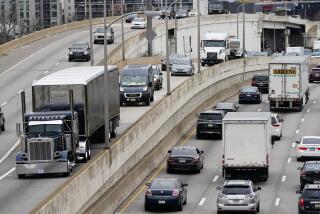Stopping Rear-Enders
- Share via
If you’re driving a 1986 model car, or an older one that has been fitted with a third, high-mounted rear brake light, you are 22% less likely to suffer a rear-end collision than a car that is not so equipped.
That’s the preliminary finding of the National Highway Traffic Safety Administration, which studied police-reported collisions that occurred over a three-month period last year in 50 statistically representative counties.
The finding supports earlier results from tests on taxicabs in several cities. Those tests played a large part in getting the federal government finally to require all cars from the 1986 model year on to be equipped with the third brake light.
The auto industry had resisted adding the third brake light for many years, arguing that it would mean an additional cost and present “styling” problems.
In fact, the added cost is modest, while the savings to motorists have been substantial. Situated approximately at eye-level, the additional stop light has been found to significantly reduce the braking reaction time of following drivers.
That has prevented tens of thousands of rear-end collisions, spared thousands of motorists from injury, and saved millions of dollars in medical and vehicle repair costs. It’s a common-sense idea that should have been adopted many years ago.





